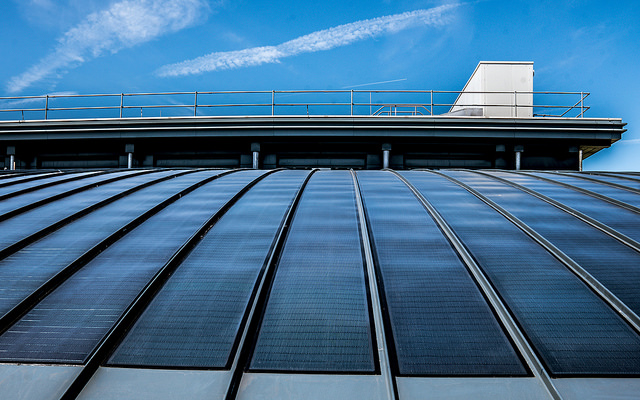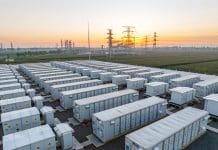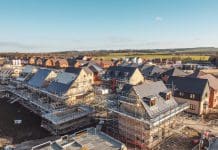Research pioneered at Swansea University to create “active” buildings that generate their own clean energy has received a multi-million pound boost from the government
The UK’s first energy-positive office, which generates more solar power than it consumes, opened at Swansea University in June.
The Active Office uses elements such as integrated photovoltaic roofs and walls, as well as air source heat pumps, to provide energy, heating and hot water.
Energy is stored and released by a smart operating system, which includes building sensors and data infrastructure to support smart operation. Excess electricity can be sold back to the national grid.
It was designed by SPECIFIC, a National Innovation & Knowledge Centre led by Swansea University, which worked with industry partners Tata Steel, NSG Group and AkzoNobel to develop its energy-generating components following on from the success of its next door neighbour, the Active Classroom, a RICS Wales Project of the Year, which generated one-and-a-half times more solar power than it consumed during its first year of operation.
SPECIFIC embraced offsite construction to deliver the active buildings, with the Active Office moving from concept to completion in just eight months.
The Active Building Centre
SPECFIC’s approach received a major boost in September when Chancellor Philip Hammond announced that more than £36m will be invested in creating an Active Building Centre at Swansea University to support the further development of innovative clean energy as part of the Transforming Construction challenge.
The centre, which will receive the funding through the Industrial Strategy Challenge Fund and UK Research & Innovation (UKRI), will be a national centre of excellence, working with supply chains from the energy and construction sectors supported by 10 universities – Swansea, Bath, Newcastle, Birmingham, Loughborough, UCL, Sheffield, Cardiff, Imperial College London and Nottingham.
“Swansea University and the innovative companies working with them are world leaders in clean energy,” Hammond said.
“This £36m new funding will support exciting green technology that could cut energy bills, reduce carbon emissions and create better homes and workspaces.”
Together, industry and university partners will work to develop:
- A critical mass of Active Building demonstration projects to demonstrate technologies and scalability.
- An evidence base for Active Buildings, including research to understand how occupants use and interact with Active Buildings, as well as technical performance data.
- Supply chain capacity, including identifying skills gaps that could affect industry acceptance of Active Buildings and inform policy.
- Technologies and toolkits for building designers and engineers to support the uptake of new designs.
- New business models, developed with companies, to accelerate market scale-up and adoption.
A portfolio of 300 buildings will be developed across the UK, in collaboration with developers and supply chains, to address difference market needs.
The centre will also get its own flagship building – the Living Lab, which will be located next to Swansea’s Bay Campus, the home of the Active Office and Active Classroom.
Professor Sir Mark Walport, chief executive of UKRI, said: “As we move towards a low-carbon economy, we need to explore more efficient ways of generating, conserving and using power and energy.
“Active buildings, which integrate solar generation and storage technologies for electricity and heat within their construction, can help to achieve this.
“The Active Building Centre will work to remove barriers to the large-scale adoption of active buildings on new developments throughout the country.”
Professor Dave Worsley, vice-president for innovation and principal investigator for the centre, added: “I passionately believe that our partnership and collaborative approach is the best way to transform construction and energy.
“The new centre will bring together our experience with the Active Classroom and Active Office with social, business, policy and energy expertise from universities and companies across the UK. Together, we can really make a difference.”














